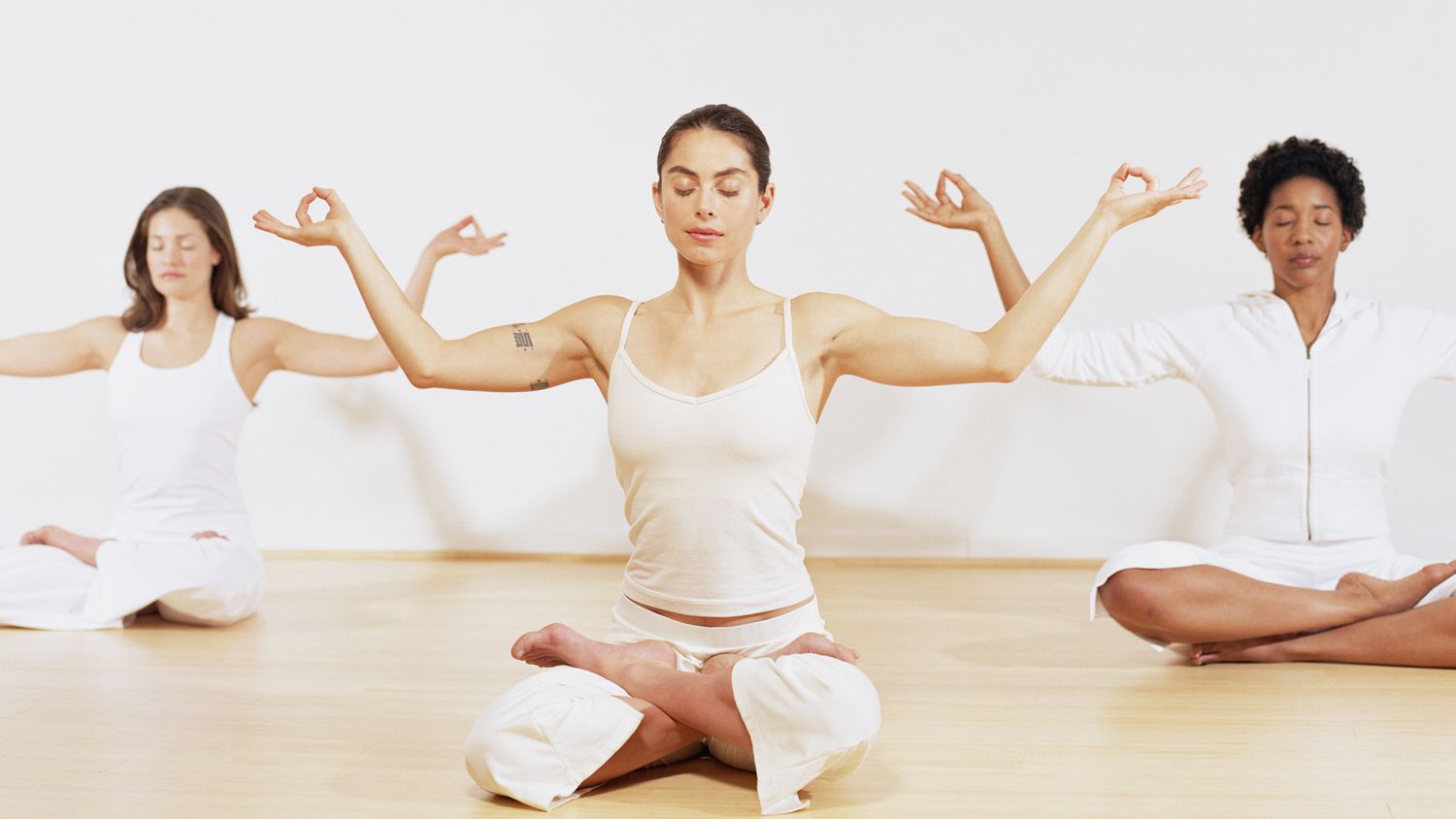Yoga poses during Pregnancy are a time of growth and change, and some poses can be uncomfortable for pregnant women. While it is unnecessary to stop practicing Yoga, some modifications may be necessary. To prevent complications, expectant mothers should avoid twisting, twirling, or compressing poses. In addition, they should avoid inversions.
Prenatal Yoga can benefit the pregnant body and relieve muscle tension, anxiety, and lower-back pain. It also helps strengthen the body for delivery. Although Yoga is safe during Pregnancy, it is important to consult with your healthcare provider before beginning a new yoga practice.
Pregnant women should avoid lying on their bellies or other poses that compress the abdomen. It would help if you avoided head-to-knee poses and seated forward bends, as these can strain the abdomen. It would help if you also modified other poses with proper stability. During Pregnancy, It should limit breathing exercises to the essentials of life.
Some yoga instructors may advise pregnant women to avoid certain poses because they may affect the baby’s growth. For instance, lying on the back for long periods may compress the large vein that carries blood from the lower body to the heart. If you are worried about this, consider modifying the pose by rolling on your side or propping up your back with a block. Similarly, don’t hold your breath too long, as this could lead to edema and varicose veins. Instead, practice alternate nostril breathing while performing these poses.
Inversion yoga poses
Pregnant women are generally advised not to practice inversions during the first trimester of pregnancy. However, during the second and third trimesters, they can safely practice yoga inversions. Practicing yoga inversions during this time also helps reduce the risk of miscarriage and morning sickness. During pregnancy, women also produce a higher amount of the hormone relaxin, which helps muscles, ligaments, and connective tissue relax. This hormone is centered around the pelvic region.

Inversions can cause a woman to experience dizziness, so she should practice them slowly and carefully. It’s best to practice by the wall or with a spotter. In any case, always listen to your body and practice according to your comfort level. Pregnant women should avoid inversions during the third trimester, and they should avoid practicing them for long periods. For example, limiting inversions to five breaths at a time, which is about 30 seconds is best. Additionally, women should avoid practicing inversions after the baby has turned or when the baby is breech.
Some of the inversions in yoga may be harmful to the fetus. These poses place the head lower than the heart, which can cause excessive blood to flow to the face. Pregnant women should also avoid challenging asanas, such as the downward-facing dog. They should also speak to their healthcare provider before trying a new exercise during pregnancy.
Deep Twists yoga poses
Deep twists are not considered safe in pregnancy. It is because they may compress the abdominal organs and disturb uterine function. Therefore, you should avoid doing standing poses involving twists. Instead, it would help if you practiced modified twists that allow for some room in the belly. Try twisting from the shoulder, neck, and upper back, instead of from the hips and abdomen.
The same applies to inversion poses. Pregnant women should avoid prone poses such as headstands or pigeons because the head may be below the heart. They can cause a fainting spell and slow down the flow of blood back to the heart. It would help if you also avoided inversions that stretch the abdomen so much that it hurts.

The best prenatal yoga program includes breathing exercises, meditation, and deep relaxation. It should also focus on strength, endurance, and flexibility. During pregnancy, women’s body’s hormone levels increase, which makes it easier for joints to become overstretched—because of this, practicing yoga in a hot room can cause a dangerously high core maternal temperature. While some poses are safe to practice during pregnancy, you should always consult a professional before you begin any exercise program.
While some yoga schools recommend that pregnant women not perform full inversions, you can continue to practice milder versions of inversions while pregnant. For instance, you can substitute a wall as your support while practicing a headstand or a separate leg forward fold. However, you should never attempt an inversion that requires you to be upside down. You could fall in the process and injure yourself or the baby.
Stretching Yoga poses
Stretching yoga can be a wonderful exercise for expecting mothers. However, modifying certain poses during pregnancy is important to accommodate the growing belly is important. For example, pregnant women should avoid lying on their stomachs and deep forward bends. They should also avoid twisting poses that put pressure on the abdomen. Instead, try modifying these poses by raising the rib cage or upper back and using props to support the belly.
Some poses are particularly risky for pregnant women because they can cause injury. Because pregnant women’s bodies produce relaxin hormone, ligaments and joints are loosened. However, women must follow precautions and consult with their care providers due to the increased risk of injury during pregnancy.

Prenatal yoga can also benefit pregnant women, as it helps with breathing and emotional health. It can also help with labor and delivery. Founder of CrossFlowX and mother of twins Heidi Kristoffer said she practiced yoga throughout her pregnancy. She also recommended that women consult a doctor before beginning a workout routine. She said, “As a general rule, stretching yoga is safe when done in moderation, with appropriate support.”
Prenatal yoga is an excellent form of stretching during pregnancy. It is a great way to learn about the baby’s anatomy and help prepare the mother for delivery. Prenatal yoga instructors are trained to work with pregnant women and teach techniques during labor. You can find prenatal yoga classes at gyms or studios; it is always best to learn under a certified instructor.
Backbend Yoga Poses

Backbends in yoga are generally safe for women in their early to mid-pregnancy stages. Still, it is important to note that back-bending can be uncomfortable for many women during this time. In addition to back pain, pushing too far into backbends can also put pressure on the abdomen and uterus. In addition, deep backbends can strain the abdominal muscles’ midline, causing diastasis recti or separation of the rectus abdominus muscle. This condition can result in back pain, hernias, and other issues that can be both uncomfortable and unsightly.
Although some deep backbends benefit expectant mothers, the poses considered unsafe during pregnancy include the full-wheel pose and the upward-facing bow pose. However, modifications to the full-wheel pose can help pregnant women avoid overstretching their backs. Other alternatives include the bridge pose and tabletop pose, which do not compress the abdomen.
Women should avoid backbends lasting more than 90 seconds when performing yoga during pregnancy. The growing baby puts extra pressure on the vena cava, transporting blood from the lower body to the heart. This pressure can cause low blood pressure and dizziness. Additionally, the increased blood flow can also raise the core temperature. It is why it is important to avoid performing yoga in hot environments.
Backbends can also be sneaky during pregnancy. If done correctly, they can open the chest and the front of the shoulders and prepare the pelvis for birth. This opening is also important post-natally, as it helps to keep the shoulders and chest open, which is important for breastfeeding and changing nappies.
Does Yoga Help With Labor and Delivery?
Some experts believe that yoga poses can help with the painful process of childbirth. Prenatal yoga classes can help relax pregnant women and prepare them for the onset of labor. While yoga isn’t a vigorous exercise, it does improve strength, flexibility, and balance. Many yoga practitioners also report experiencing less pain during labor than before.
Several poses are beneficial for the early and advanced stages of labor. For example, the Garland Pose targets the inner thighs, hips, and pelvis. Other poses that target these areas include the Forward Fold and Pigeon Pose. These can help prepare the body for labor and help a woman deliver her baby faster.

During pregnancy, yoga can improve the health of both the mother and the baby. It improves birth weight and decreases preterm labor. It also improves muscle strength, improves circulation, and reduces heart rate and blood pressure. Yoga can also help mothers feel closer to their babies and support the birth process. A study published in 2012 found that pregnant women who practiced yoga during their pregnancy were less likely to experience preterm labor and low-birthweight babies.
Another study found that yoga reduces the risk of preterm delivery and cesarean section and can prevent fetal death. Researchers have studied these factors to see if they can reduce fetal and maternal delivery complications.
Conclusion
All these poses are unsafe for pregnant women. These poses avoid during pregnancy because it causes pressure on the organs. Prenatal Yoga is the best benefits during pregnancy and outcomes at birth and throughout labor. It helps to increase the flexibility and muscle strength needed for childbirth. It reduces stress and anxiety.
If you can do prenatal Yoga during pregnancy, you can join our Prenatal yoga training Program at Adwait Yoga School.








